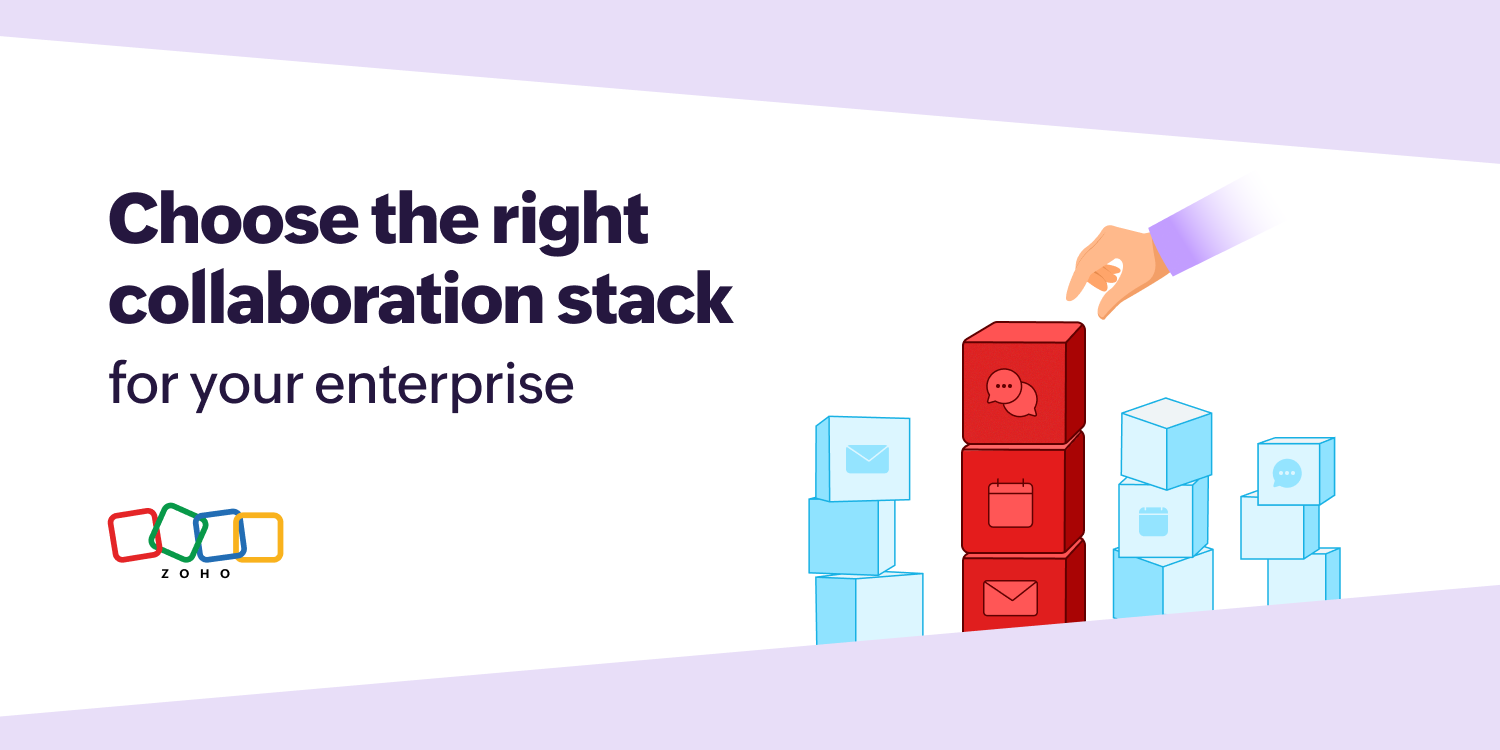- HOME
- All Topics
- Productivity in the workplace
- How asynchronous communication helps teams work better
How asynchronous communication helps teams work better
- Published : November 28, 2024
- Last Updated : December 20, 2024
- 1.0K Views
- 7 Min Read
Alex, a tech-savvy individual, decides to try online grocery shopping for the first time. Excited about the convenience, he places an order on a popular grocery app. He selects a favorable delivery slot and heads out for a leisurely stroll.
Later that day, a notification pops up on his phone. The grocery app informs him that one of the items he ordered is out of stock. The app suggests a replacement item, but Alex isn't satisfied. He quickly types out a message to the customer support chat, explaining his preference for a different replacement.
The next morning, he wakes up to a notification from the grocery app. The customer support agent has responded to his message, suggesting another replacement option. Alex reads the message, considers the suggestion, and replies with a "sure, that works."
See how Alex doesn't have to be immediately available to chat with the customer support agent? The entire process, from order placement to replacement, was conducted asynchronously. Even without real-time communication, everything went smoothly.
This flexibility is a key benefit of asynchronous communication, making it a popular choice for modern, busy individuals. You may not realize it, but you're already using asynchronous communication every day.

What is asynchronous communication?
Asynchronous communication is like sending a text message and not expecting an immediate reply. You send it, and the other person can read it and respond when they have time without feeling pressured to answer right away.
Here are some common examples of asynchronous communication tools:
- Email: One of the oldest and most widely used tools for asynchronous communication.
- Project management tools: Tools like Zoho ToDo, Trello, Asana, and Jira allow teams to collaborate on projects asynchronously.
- Shared document tools: Platforms like Zoho Writer, Google Docs, and Microsoft Word allow multiple people to work on documents simultaneously, but asynchronously.
- Message boards: Online forums and discussion boards are great for asynchronous discussions and knowledge sharing.
- Instant messaging apps: While often used for synchronous communication, many messaging apps like Zoho Cliq, Slack, and Microsoft Teams can also be used asynchronously.
Asynchronous communication works wonders in various scenarios.
- Distributed teams: For teams spread across different time zones, asynchronous communication ensures consistent collaboration and efficient knowledge sharing.
- Flexible work arrangements: When team members have flexible schedules or work remotely, asynchronous tools provide a reliable way to stay connected and keep projects moving forward.
- In-depth project updates: For complex projects requiring detailed explanations and discussions, asynchronous communication allows for thoughtful responses and in-depth analysis.
- Reducing meeting fatigue: By minimizing the need for constant real-time meetings, asynchronous communication can reduce meeting fatigue and improve overall productivity.
- Promoting inclusivity: Asynchronous communication can level the playing field, allowing individuals from diverse backgrounds and time zones to contribute equally.
Asynchronous vs. synchronous communication
In asynchronous communication, messages are exchanged at different points in time, similar to the days when letters took weeks to arrive in the mail. Unlike synchronous communication, which requires real-time interaction, asynchronous communication allows participants to respond at their convenience. Below are some key differences between asynchronous and synchronous communication.
Feature | Asynchronous communication | Synchronous communication |
Timing | Delayed delivery | Real-time interaction |
Flexibility | Respond at your own pace | Requires immediate attention |
Examples | Email, messaging apps, forums, collaborative tools | Phone calls, video conferences, and in-person meetings |
In today's increasingly remote and hybrid work environments, asynchronous communication has emerged as a crucial tool for effective collaboration. By enabling teams to work independently and at their own pace, asynchronous communication fosters flexibility, productivity, and a positive work-life balance.
Key benefits of asynchronous communication
1. Enhanced flexibility
Some team members are early birds, while others are night owls. With global teams, different teams work at independent shifts.
By eliminating the need for real-time interaction, asynchronous communication tools empower team members in different time zones to collaborate effectively.
2. Reduced interruptions
Who needs endless meetings when you can have efficient email chains? The Work Trend Index by Microsoft revealed that 62% of calls and meetings are unscheduled. With reduced interruptions, team members can concentrate on their tasks without constant distractions.
3. A record of everything
Whether it's written communication or information tracked via tools, one of the significant advantages of asynchronous communication is the creation of a detailed, searchable record of all interactions.
The documented history of projects and discussions can serve as a valuable knowledge base for future reference, onboarding new team members, or revisiting past decisions.
4. Increased focus and productivity
Asynchronous communication reduces the pressure to be constantly available and offers a welcome respite from the relentless noise. This can enable team members to focus on their tasks.
5. Better decision-making
In a related study, 64% said meetings come at the expense of deep thinking. Well-considered, written communication often leads to more thoughtful and informed decisions.
How asynchronous communication enhances team dynamics
We have a saying of our own: Sometimes the best way to collaborate is not to collaborate in real time. Why?
1. It encourages thoughtful and informed responses.
- Asynchronous communication provides ample time for creative thinking and innovative problem-solving.
- By avoiding rushed responses, team members can minimize the risk of making hasty decisions.
- Taking the time to craft thoughtful messages can boost self-confidence and empower team members to share their ideas.
2. It provides a level playing field for all team members.
- Asynchronous communication gives everyone a chance to share their ideas and insights, without the pressure of real-time interaction.
- In synchronous meetings, extroverts often dominate the conversation while introverts quietly sip their coffee in the background. Asynchronous communication allows introverts to contribute at their own pace.
- By encouraging a more inclusive environment, asynchronous communication can strengthen team bonding and collaboration.
3. It empowers team members with a culture of self-reliance.
- Asynchronous communication makes it easier to track individual contributions and hold team members accountable for their work.
- By independently researching and analyzing information, team members develop strong problem-solving abilities.
- By working independently, team members can optimize their time and prioritize tasks effectively.
Best practices for asynchronous communication
Asynchronous communication can transform the way teams collaborate, especially in remote and hybrid work environments. However, to maximize its benefits, it's crucial to establish clear boundaries and expectations. Here's how to use it wisely:
1. Response time expectations
Clearly define response times for different types of messages.
For urgent matters, prompt responses are essential. Reserve synchronous communication for meetings such as brainstorming sessions and decision-making processes.
For less urgent queries, establish reasonable response timeframes to avoid unnecessary pressure and burnout. Use asynchronous communication for routine updates, document sharing, and in-depth discussions.
2. Use the right tool for the job
To fully harness the power of asynchronous communication, organizations should leverage a suite of tools designed to facilitate collaboration and information sharing.
Project management tools
Asana, Trello, Zoho Projects: These tools are perfect for task management, project tracking, and team collaboration. They enable team members to assign tasks, set deadlines, and provide updates asynchronously.
Document collaboration platforms
Google Docs, Zoho Writer: These platforms allow for real-time and asynchronous collaboration on documents, spreadsheets, and presentations. Team members can edit, comment, and track changes remotely.
Messaging and chat apps
Slack, Microsoft Teams, Zoho Cliq: These tools enable quick and efficient communication, both synchronous and asynchronous. They support direct messaging, group chats, and file sharing.
Gmail, Outlook, Zoho Mail: While email is a traditional communication tool, it remains a powerful tool for asynchronous communication, especially for formal correspondence and detailed discussions.
Knowledge base tools
Confluence, Notion, Zoho Learn: These tools allow teams to create and share knowledge bases, wikis, and documentation. They're ideal for documenting and sharing best practices, troubleshooting guides, and other important information.
3. Regular check-ins
It's essential to maintain a sense of connection and alignment within the team. Regular check-ins, whether synchronous or asynchronous, can help bridge the gap and ensure that everyone's kept in the loop. Some effective practices can be:
- Weekly updates (asynchronous): Team members can provide written updates on their progress, challenges, and plans for the week.
- Virtual coffee breaks: Schedule informal virtual meetings to discuss non-work topics and build relationships.
- Quarterly retrospectives: Conduct retrospective meetings to reflect on past projects, identify lessons learned, and celebrate successes.
The challenges and solutions of asynchronous communication
One of the biggest challenges with asynchronous communication? Convincing your boss that you're actually working, not just scrolling through cat videos.
All jokes aside, while asynchronous communication offers numerous benefits, it's essential to address potential challenges to ensure effective collaboration.
1. Potential for delayed responses
While this flexibility of delayed responses is a significant advantage, it can sometimes lead to slower decision-making and frustration.
- Set clear expectations for response times to different types of messages. For urgent matters, prompt responses are crucial. For less urgent inquiries, a longer response time may be acceptable.
- Implement a system of tagging urgent messages to prioritize them. This helps team members understand the urgency and respond accordingly.
2. Delayed clarification
One of the potential drawbacks of asynchronous communication is the lack of immediate clarification. This can lead to misunderstandings, delays, and frustration.
- Be clear and concise: Clearly articulate your message, avoiding ambiguity and jargon.
- Include relevant background: Provide the necessary context to ensure your message is understood.
- Use visual aids: Employ visual aids like diagrams or screenshots to enhance understanding.
- Encourage questions: Encourage team members to ask questions and seek clarification
- Listen actively: When responding to messages, actively listen and consider the sender's perspective.
3. Building team cohesion
Asynchronous communication can sometimes lead to feelings of isolation and a weakened sense of team cohesion.
- Schedule periodic meetings: Schedule regular team meetings to discuss progress, align goals, and share updates.
- Provide feedback and recognition: Offer constructive feedback and recognize individual contributions to boost morale and motivation.
- Share personal updates: Encourage team members to share personal updates and anecdotes to build rapport and strengthen relationships.
A smarter way to work together
By reducing distractions and allowing for focused work, asynchronous communication has emerged as a powerful tool for modern teams.
Asynchronous communication is like a superpower, but like all superpowers, it comes with great responsibility. By setting clear expectations, using the right tools, and establishing effective communication protocols, teams can maximize the benefits of this powerful approach. Start incorporating these practices into your team's workflow today and experience the benefits firsthand.
Have a winning asynchronous communication strategy? Share your tips and tricks in the comments. We'd be thrilled to hear them!
 Prashanth
PrashanthPrashanth is a Senior Product Marketer in the Zoho Workplace team who focuses more on Workplace productivity and how teams can work better. He loves bringing a creative element to his work. He enjoys traveling, writing, reading, and playing badminton.


